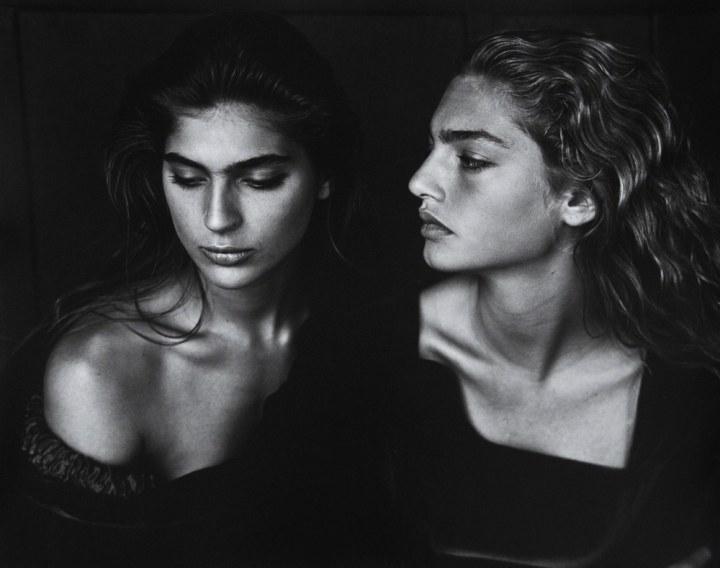Albert Watson has made his mark as one of the world’s most successful photographers since he began his career in 1970, blending art, fashion and commercial photography. From portraits of Alfred Hitchcock and Steve Jobs, beauty shots of Kate Moss, to Las Vegas landscapes and still-life photographs of King Tutankhamen artifacts, Albert’s diversity and body of work are unparalleled. His striking photographs and hand-made prints are featured in galleries and museums around the globe, and are included in the permanent collections of the National Portrait Gallery in London and Metropolitan Museum of Art in New York, among others. Albert has won numerous honours, including an Order of the British Empire (OBE) from Queen Elizabeth II for his contribution to the art of photography, and a lifetime achievement award from the Royal Photographic Society. Other awards include a Cartier Lifetime Achievement Award, Lucie Award, three Andys, a Der Steiger Award, and a Hasselblad Masters Award.
Over the years, Albert’s photographs have appeared on more than 100 covers of Vogue worldwide and been featured in countless other publications, from Rolling Stone to Time to Harper’s Bazaar. Albert also has created the photography for hundreds of ad campaigns for major companies, such as Prada, the Gap, Levi’s, Revlon and Chanel. He also took the photography for the 2019 Pirelli Calendar, has shot dozens of Hollywood movie posters, such as “Kill Bill” and “Memoirs of a Geisha.” Alongside this, Albert has spent much of his time working on art projects for his museum and gallery exhibitions, which feature his well-known portraits and fashion photographs, along with powerful shots from his travels and interests, such as a snake charmer in Morocco, a dominatrix in Las Vegas or the dramatic mountains on the Isle of Skye in Scotland.
Born and raised in Edinburgh, Scotland, Albert studied graphic design at the Duncan of Jordanstone College of Art and Design in Dundee, and film and television at the Royal College of Art in London. Though blind in one eye since birth, Albert studied photography as part of his curriculum. In 1970, he moved to the United States with his wife, Elizabeth, who got a job as an elementary school teacher in Los Angeles, where Albert’s interest in taking photographs began in earnest.
Later that year, Albert met an art director at Max Factor, who offered him his first test session, from which the company bought two shots. Albert’s distinctive style eventually caught the attention of American and European fashion magazines such as Mademoiselle, GQ, and Harper’s Bazaar, which booked him for a shoot with Alfred Hitchcock, the first big celebrity Albert ever photographed. Soon after, Albert began commuting between Los Angeles and New York, and in 1975, he won a Grammy for the photography on the cover of the Mason Proffit album “Come and Gone.” In 1976, Albert landed his first job for Vogue, and with his move to New York that same year, his career took off.
Albert has published several books: “Cyclops” (1994, Bullfinch); “Maroc” (Rizzoli, 1998); "Albert Watson” (Phaidon, 2007); "Strip Search" (PQ Blackwell/Chronicle 2011); and "UFO: Unified Fashion Objectives" (PQ Blackwell/Abrams 2011.), “Kaos,” (Taschen, 2017.) and “Creating Photographs – Masters of Photography” (Orion, 2021.). In addition, many catalogues of Albert’s photographs have been published in conjunction with museum and gallery shows.
Albert has had solo exhibitions at the Museum of Modern Art in Milan, Italy; the KunstHausWien in Vienna, Austria; the City Art Centre in Edinburgh; the FotoMuseum in Antwerp, Belgium; the NRW Forum in Dusseldorf, Germany; the Forma Galleria in Milan; Fotografiska in Stockholm, Sweden; the Multimedia Art Museum in Moscow; the Museum of Kyoto, Japan; and the Deichtorhallen in Hamburg, Germany, which included a new body of work Albert shot in Benin, Africa. Recently he had a solo exhibition atHangaram Art Museum (Seoul, South Korea) in 2023.
Albert’s photographs have also been featured in many group museum shows, including at the National Portrait Gallery in London, the Metropolitan Museum of Art in New York, the Pushkin Museum of Fine Arts in Moscow, the Lianzhou Museum of Photography in China, the International Center of Photography in New York, the Brooklyn Museum, and the Deichtorhallen. His photographs are included in the permanent collections at the National Portrait Gallery, the Metropolitan Museum of Art, the Smithsonian, the Scottish Parliament, the Deichtorhallen, the Multimedia Art Museum, and the Museum Folkwang in Essen, Germany, among others.





